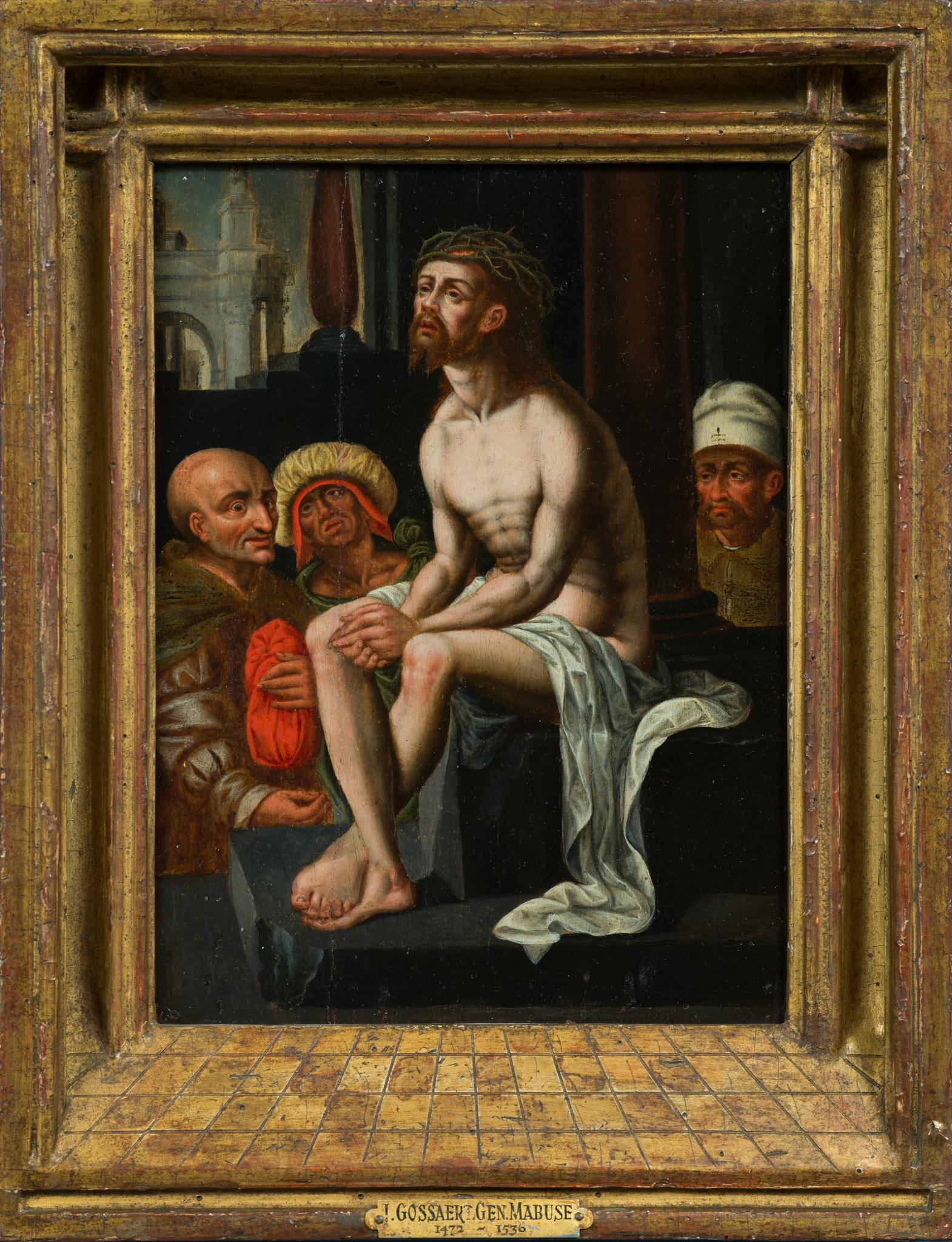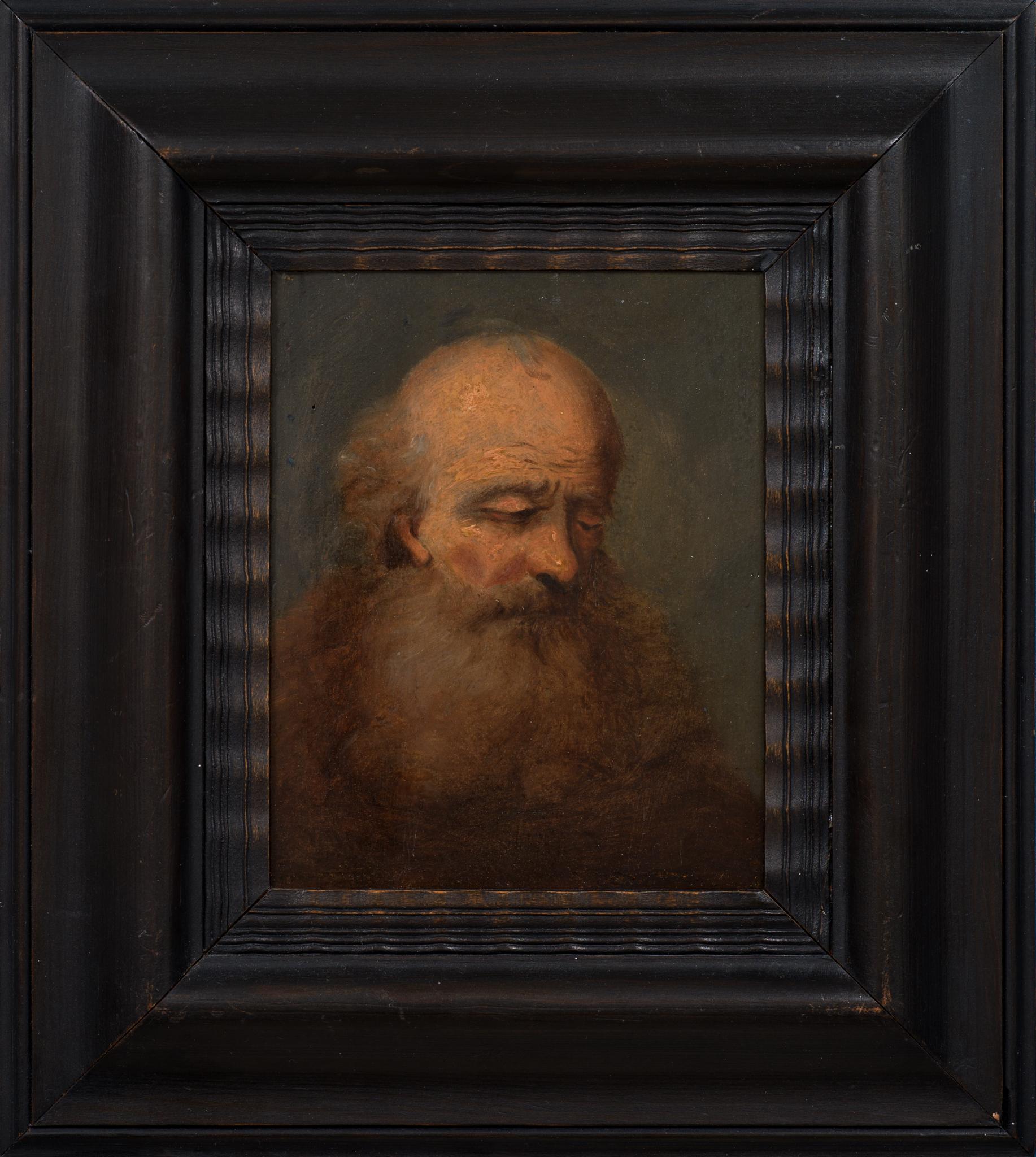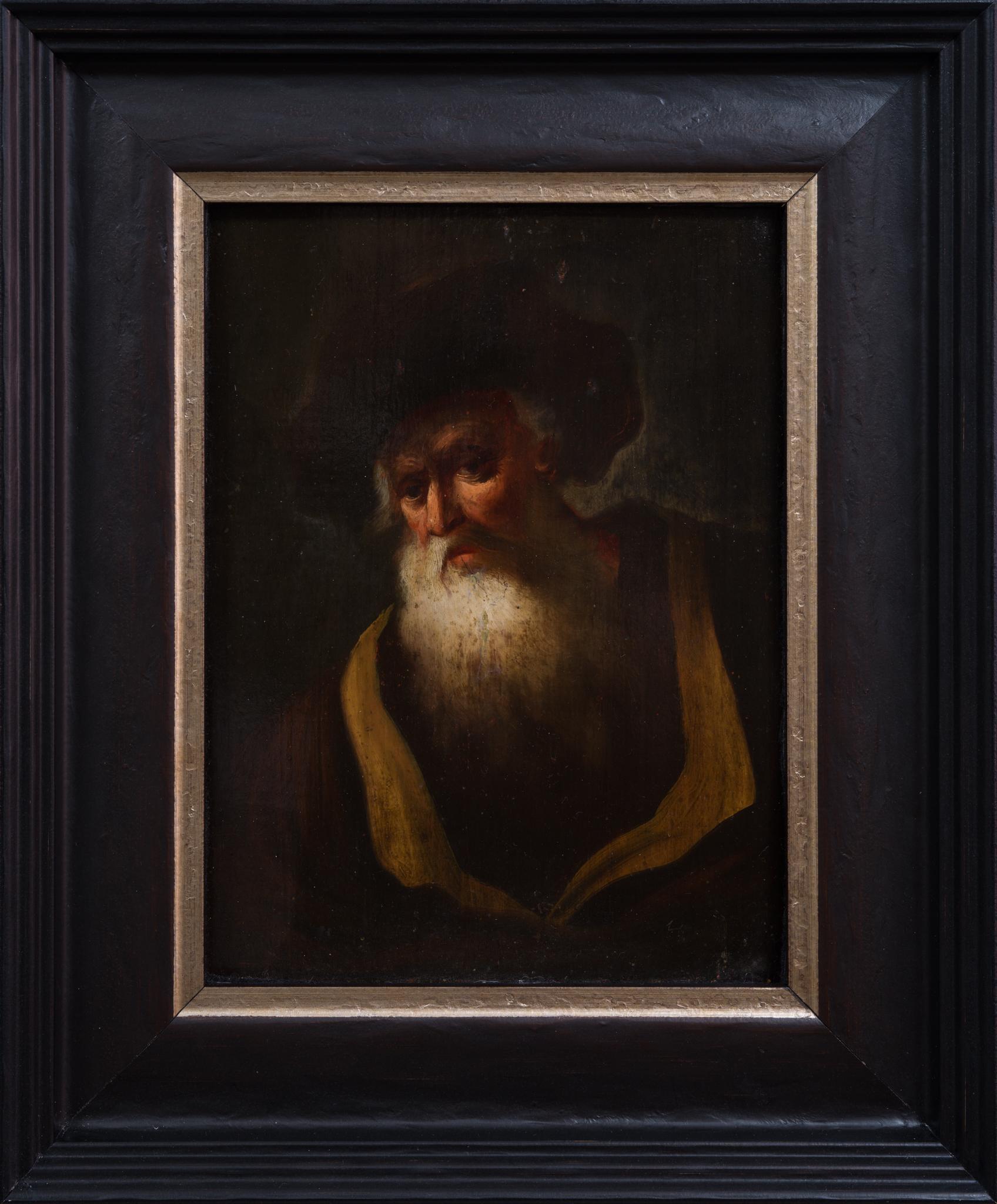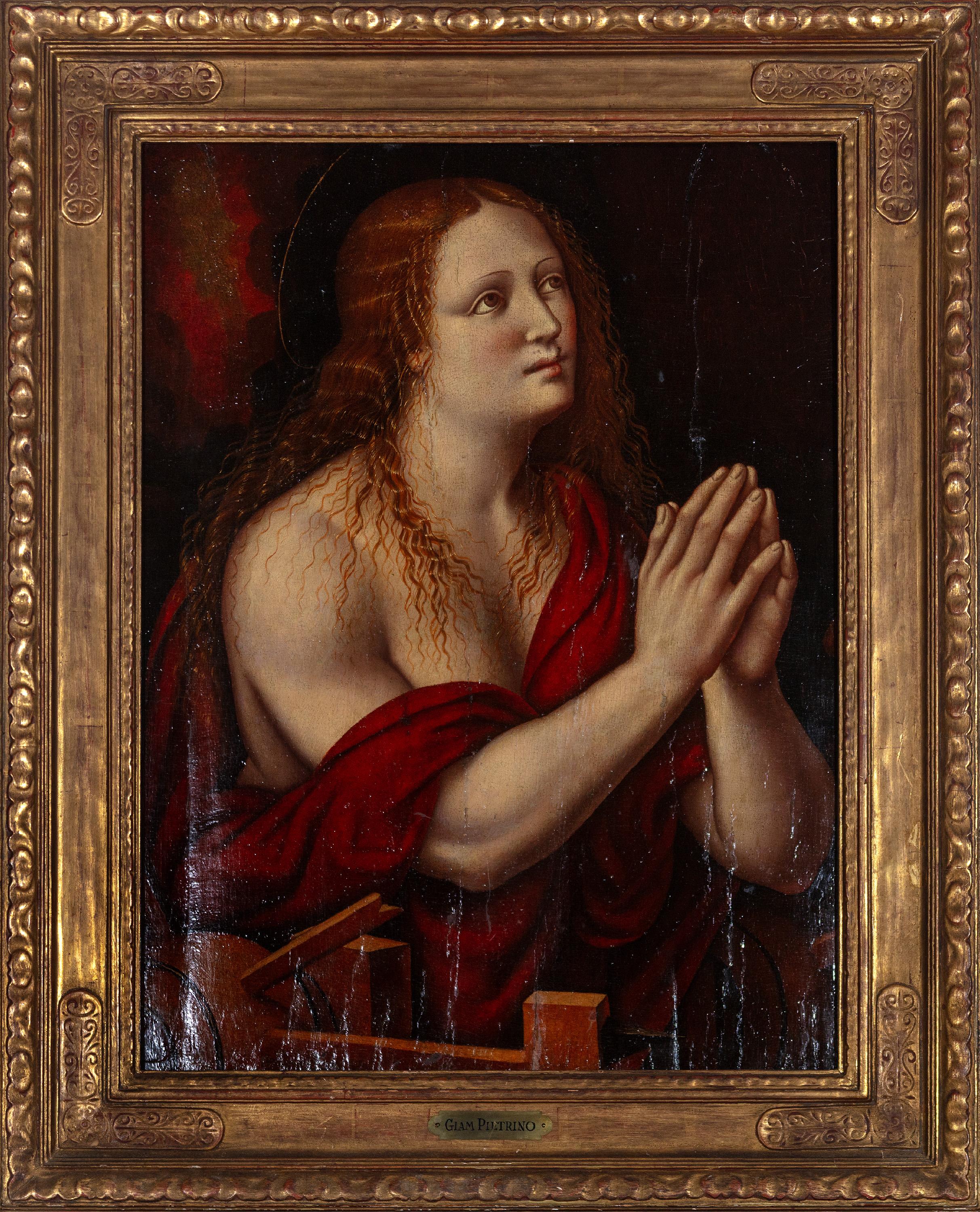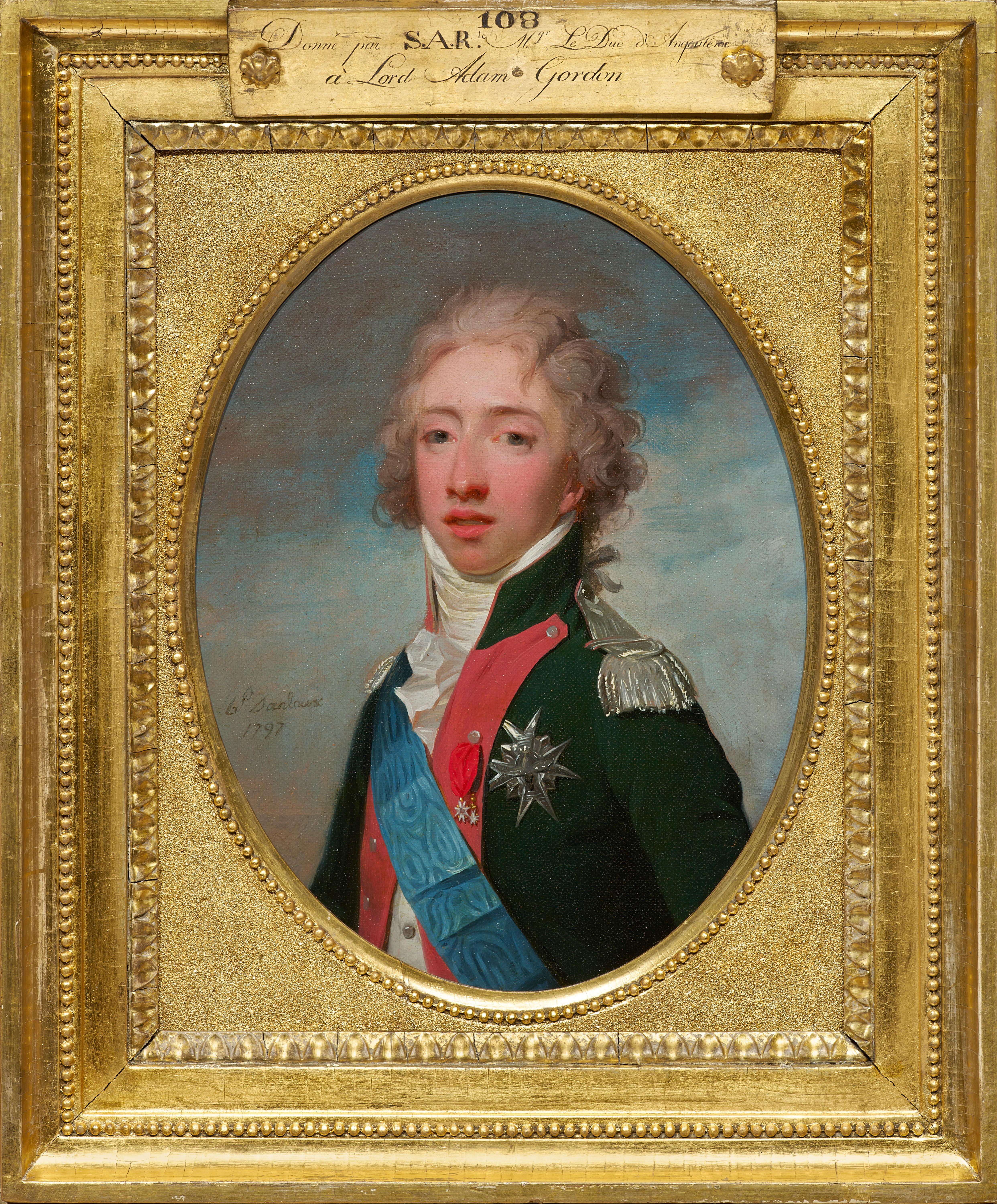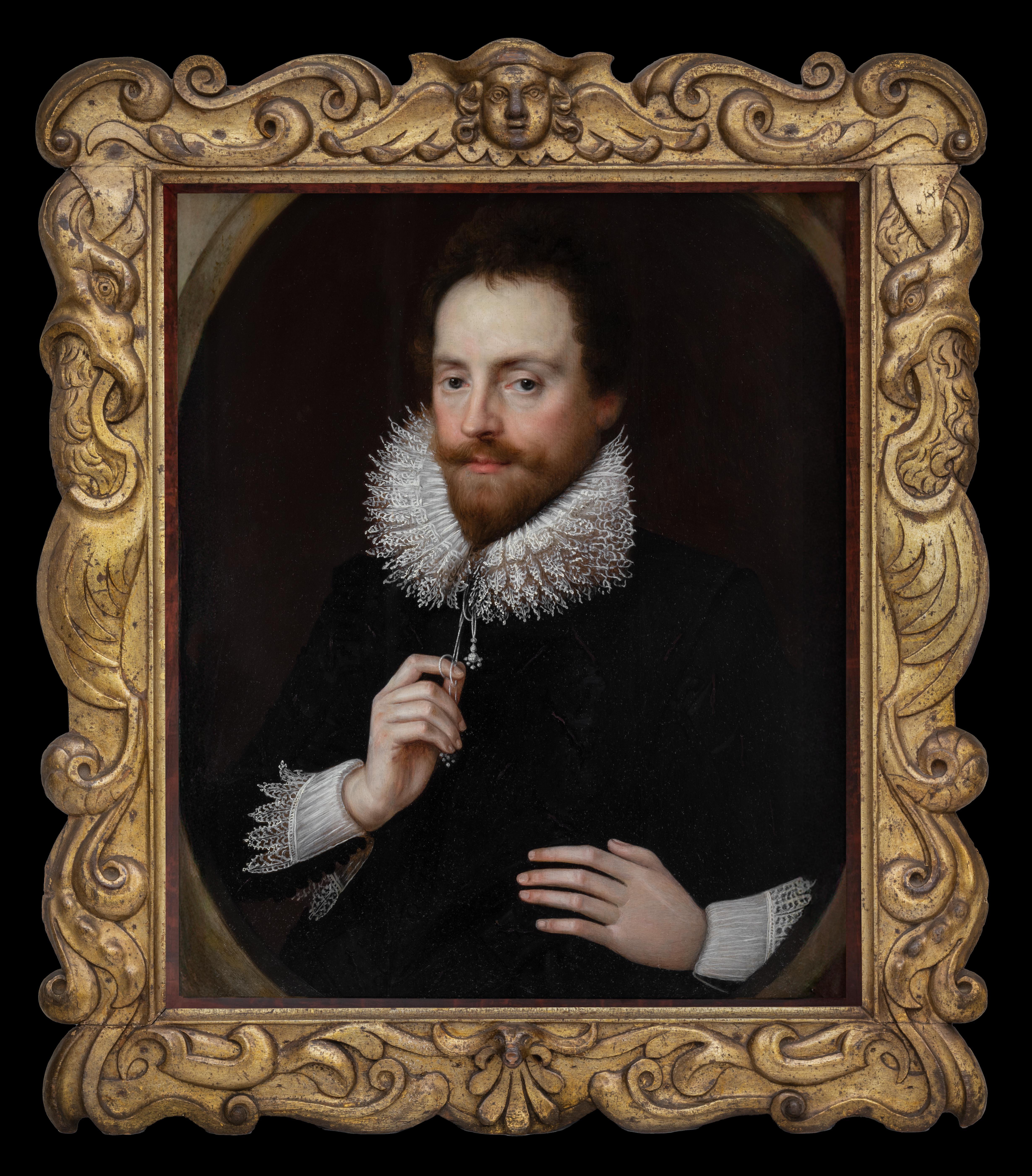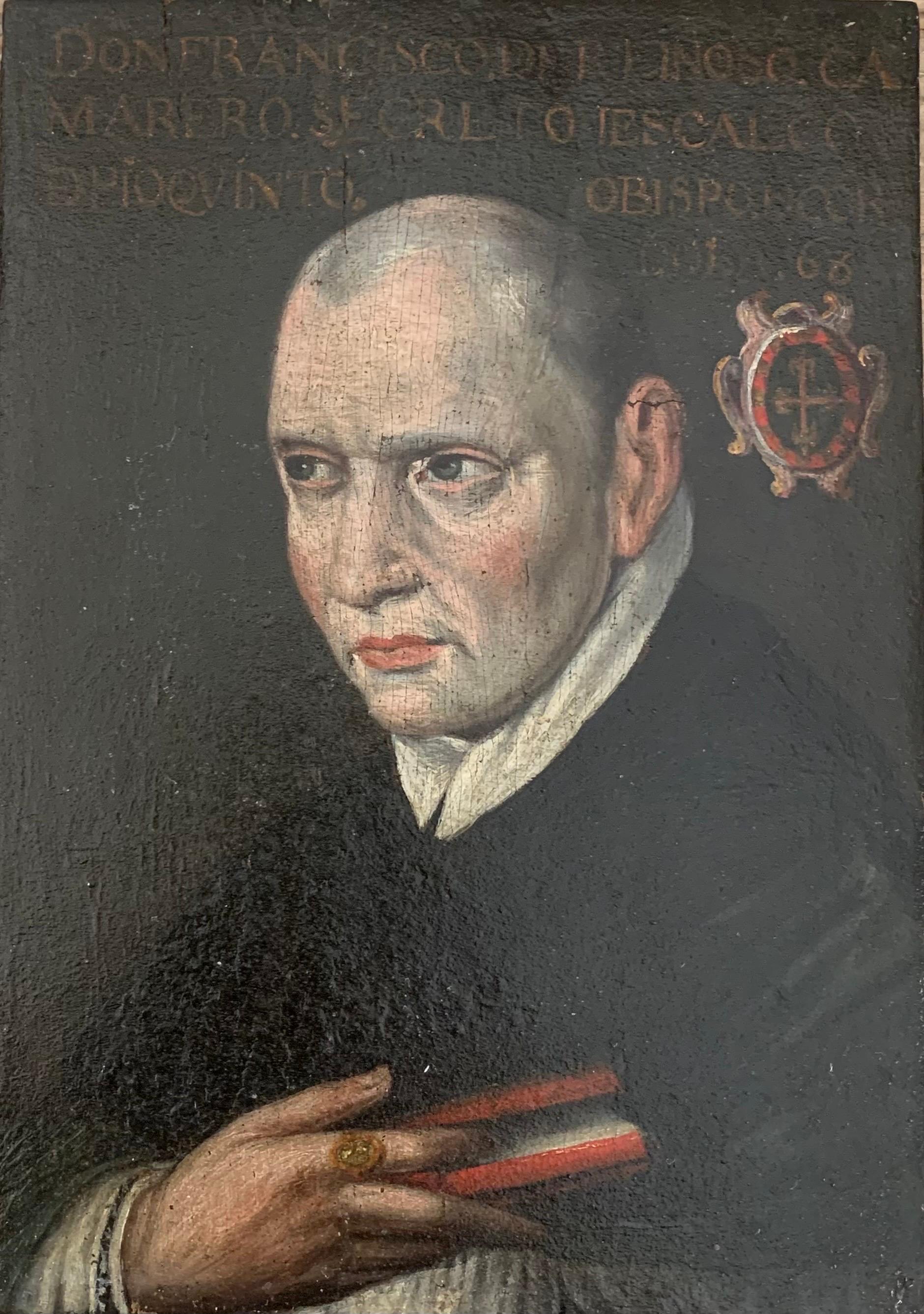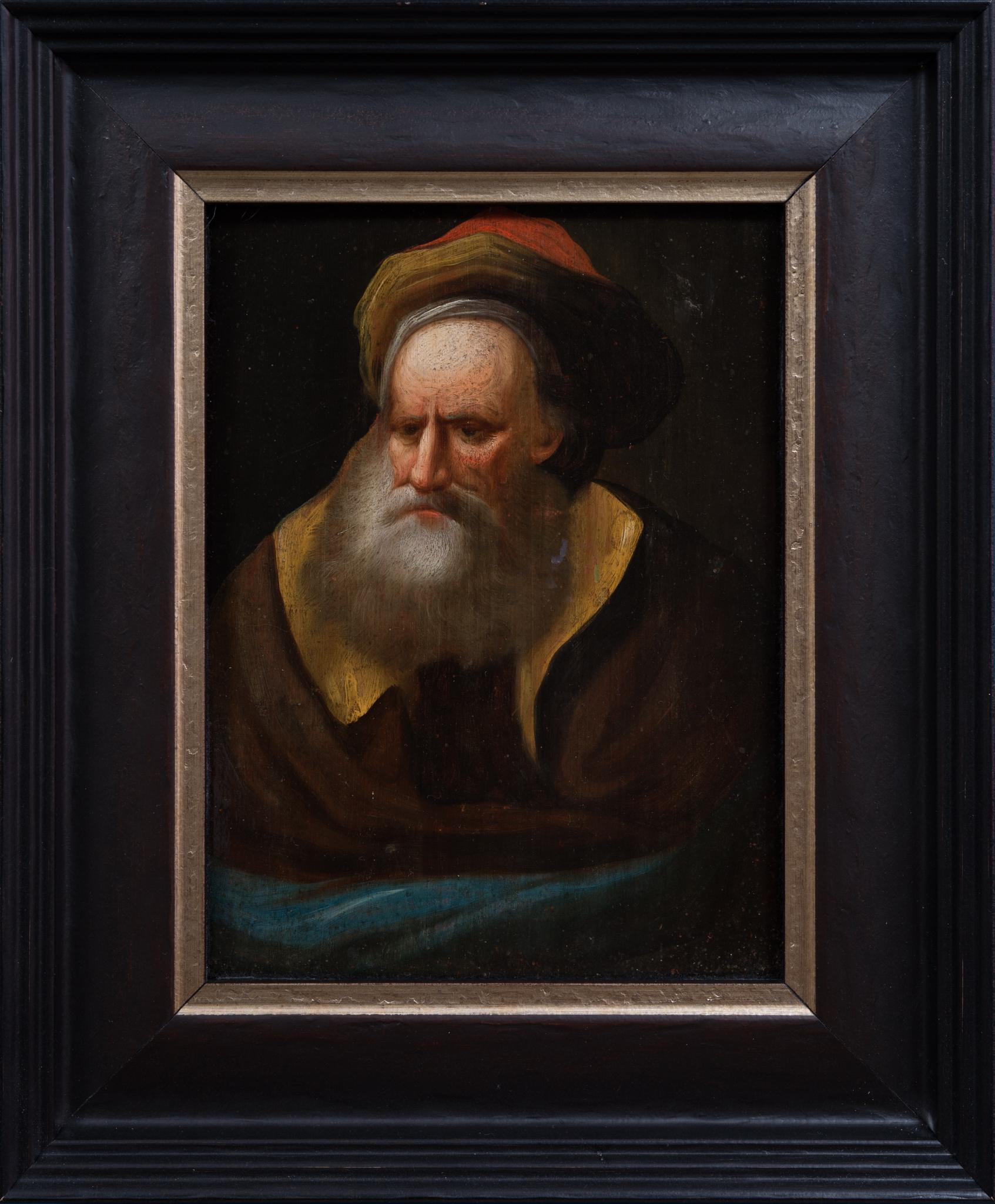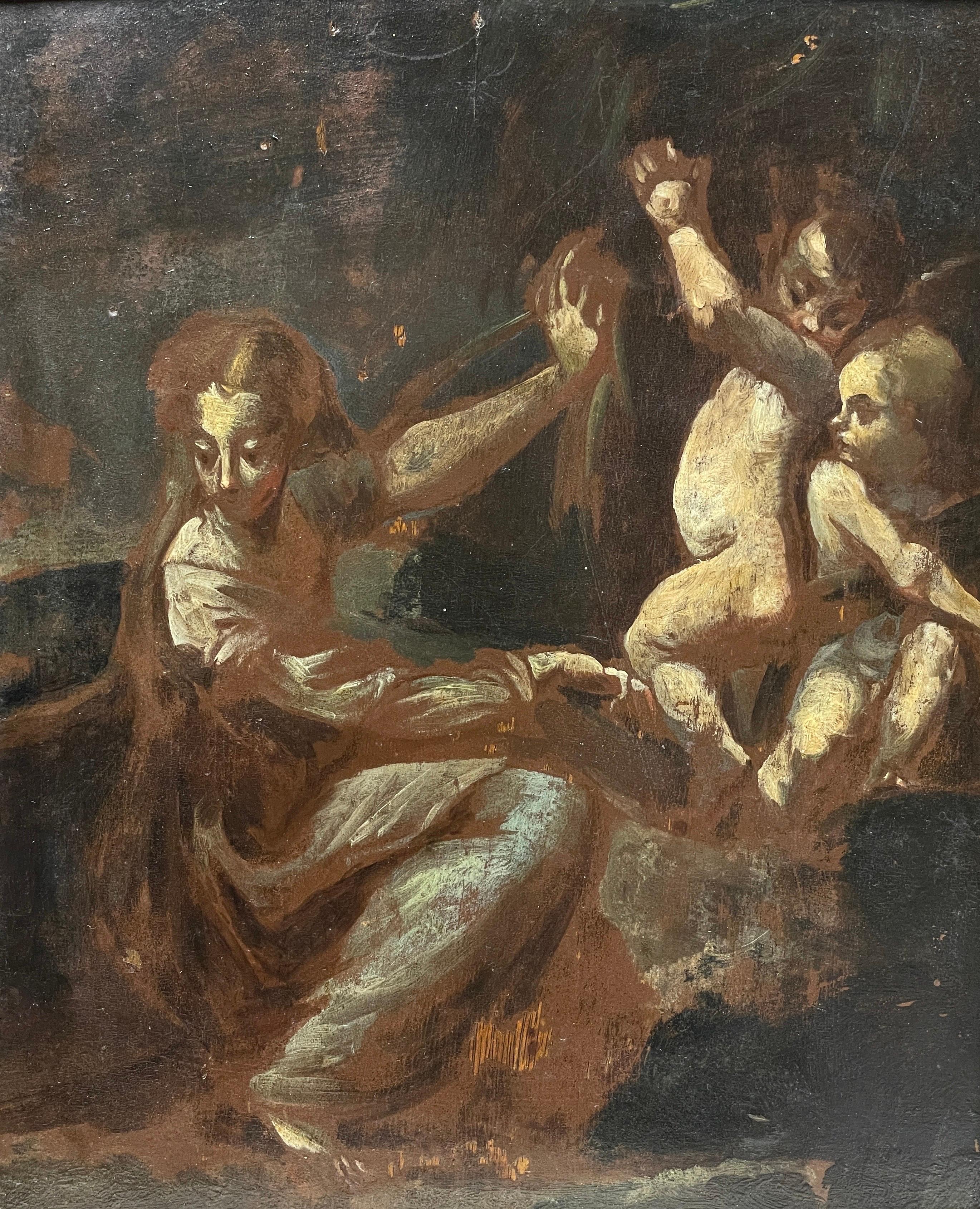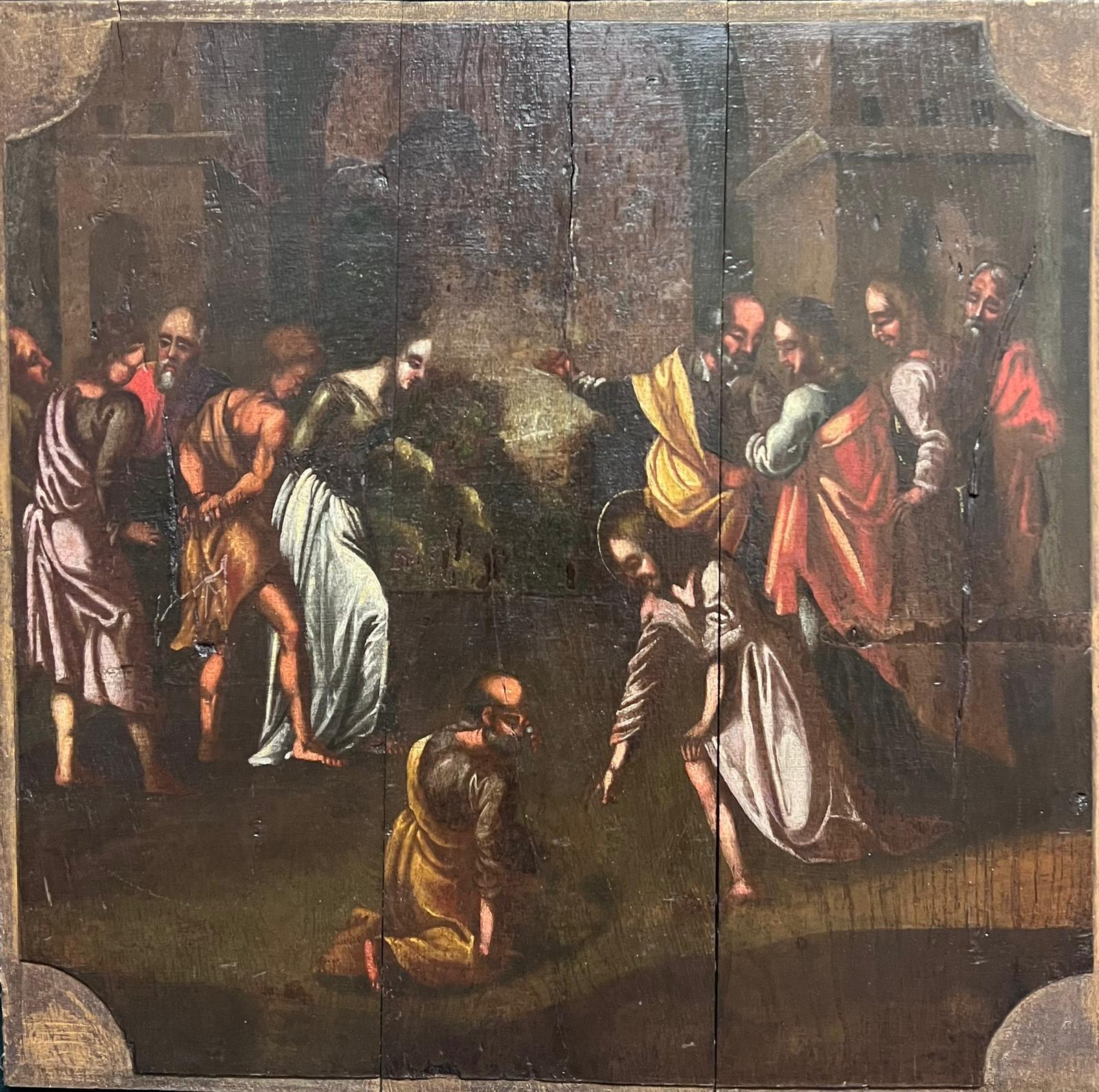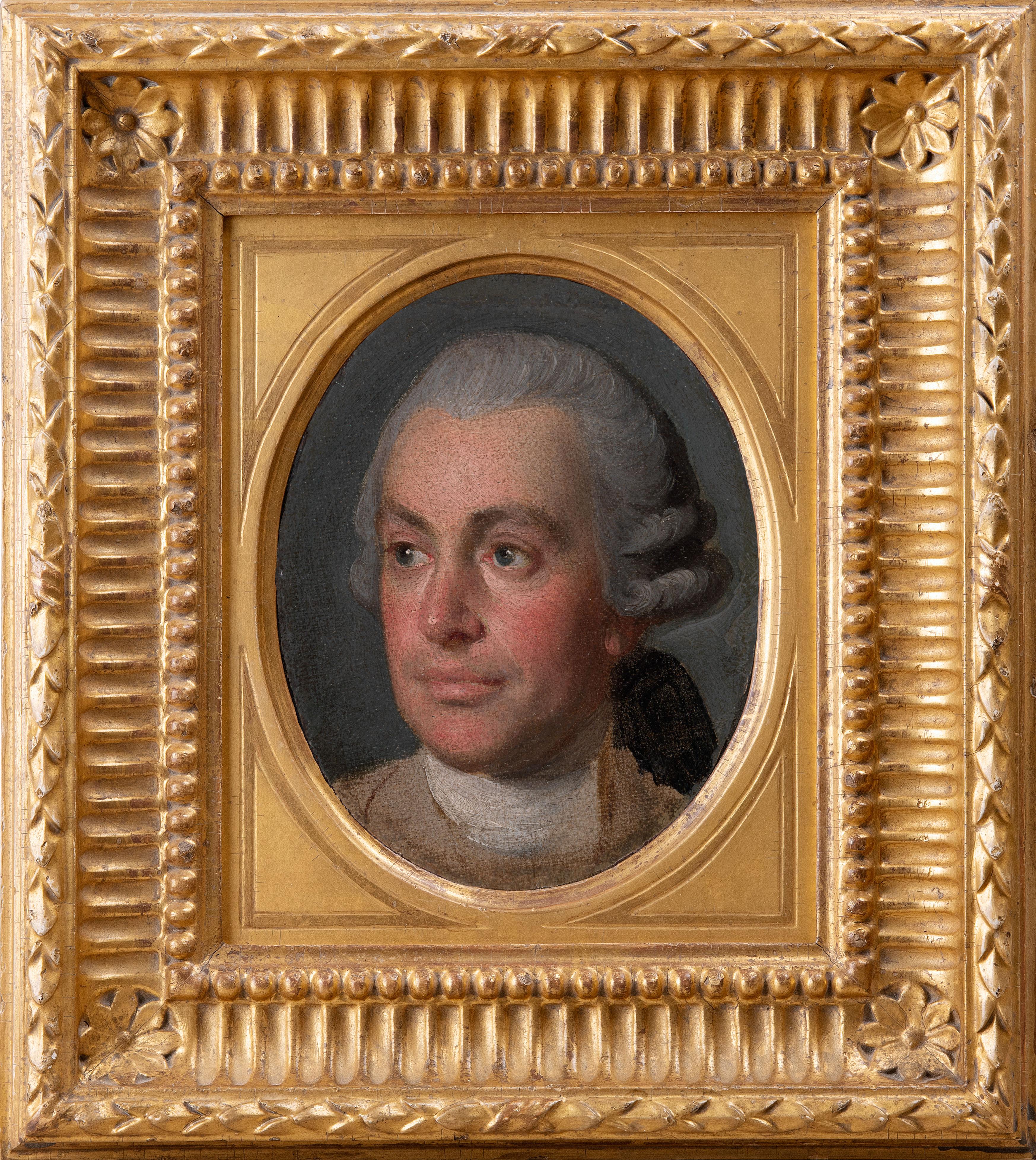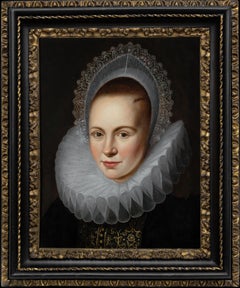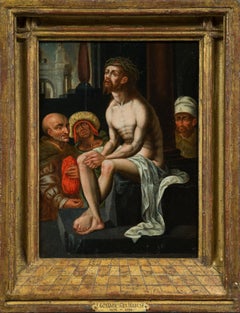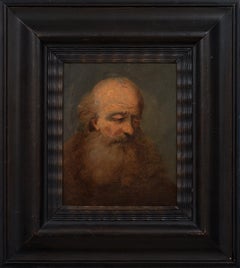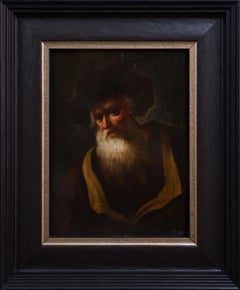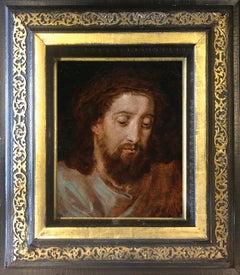
Attributed Frans Floris the Elder (1517-1570) Depiction of Christ
1 of 9
Frans Floris The ElderAttributed Frans Floris the Elder (1517-1570) Depiction of ChristCirca 1550
Circa 1550
About the Item
- Creator:Frans Floris The Elder (1517 - 1570, Flemish)
- Creation Year:Circa 1550
- Dimensions:Height: 15.95 in (40.5 cm)Width: 14.38 in (36.5 cm)Depth: 3.55 in (9 cm)
- More Editions & Sizes:Image Size: H 26 cm x W 21 cmPrice: $19,000
- Medium:
- Movement & Style:
- Period:
- Condition:This painting has recently been restored in London. It was cleaned, the old varnish was removed and the painting has been re-varnished. The frame dates from 1800s and has been made to fit the panel with the panel sitting behind glass.
- Gallery Location:Pymble, AU
- Reference Number:1stDibs: LU97713026453
Authenticity Guarantee
In the unlikely event there’s an issue with an item’s authenticity, contact us within 1 year for a full refund. DetailsMoney-Back Guarantee
If your item is not as described, is damaged in transit, or does not arrive, contact us within 7 days for a full refund. Details24-Hour Cancellation
You have a 24-hour grace period in which to reconsider your purchase, with no questions asked.Vetted Professional Sellers
Our world-class sellers must adhere to strict standards for service and quality, maintaining the integrity of our listings.Price-Match Guarantee
If you find that a seller listed the same item for a lower price elsewhere, we’ll match it.Trusted Global Delivery
Our best-in-class carrier network provides specialized shipping options worldwide, including custom delivery.You May Also Like
Portrait of a Lady in an Elaborate Ruff and White Coiff c.1616, Oil on Panel
Located in London, GB
This exquisite oil on panel portrait, depicts a young lady wearing the most elaborate and costly items of the period - the Dutch coif or coronet of sheer lawn with lace, the lavishly embroidered stomacher, and the exquisite ‘molensteenkraag’ or millstone collar, made of batiste fabric. These items were worn by the wealthy individuals in society. The collar itself often requiring over 15 metres of fabric and an incredible effort to maintain. The whiteness of her skin serves as a marker of her social background and status, highlighting how physical appearance can often play a significant role in how individuals were perceived in society.
This portrait shows the precise, meticulously crafted, style for which the artist became well-known and is a fine example in its description of the sitter’s character and the careful reproduction of the face and fabrics. The well-preserved condition provides a unique opportunity for us to admire the intricacy and details of the attire that may not always be possible in portraits from a similar age. The dark pigments used to depict the expensive black silk, along with the intricate lace, have remarkably stood the test of time, allowing us to appreciate the craftsmanship and artistry that went into creating them four hundred years ago.
The gold pin worn in her hair on her left side indicates that she was engaged when the portrait was painted; married women wore the ‘betrothal pin’ on their right side.
Like rhetoricians, seventeenth-century artists were bound by rules and expectations for proper decorum, even in matters of dress. Costume was carefully chosen to suit the ideals of a particular culture or sitter and was used to convey a multitude of meanings. Knowledge of its associations and the history of costume can be crucial to the interpretation of portraiture.
The Dutch Golden Age of painting was a period in Dutch history, roughly spanning the 17th century, in which Dutch trade, science, military, and art were among the most acclaimed in the world. Dutch explorers charted new territory and settled abroad. Trade by the Dutch East-India Company thrived, and war heroes from the naval battles were decorated and became national heroes. During this time, The Dutch Old Masters began to prevail in the art world, creating a depth of realistic portraits of people and life in the area that has hardly been surpassed. The Golden Age painters depicted the scenes that their discerning new middle-class patrons wanted to see. This new wealth from merchant activities and exploration combined with a lack of church patronage, shifted art subjects away from biblical genres. Still lifes of items of everyday objects, landscapes, and seascapes reflecting the naval and trade power that the Republic enjoyed were popular. The large group portrait is also a standard subject often of a civic organisation. The new wealthy class were keen to have their portraits commissioned and thus many artists worked in this lucrative genre.
This portrait was in the famous collection of Dr. Paul Viktorovich Delaroff (1852-1913) who was a legal advisor based in St. Petersburg and Pavlovsk. He was the son of a Russian army general, he attended the Imperial School of St. Petersburg, earned a doctorate in law, and later taught civil law at the University of Kharkiv. However, he soon left academia to serve as an advisor at the Ministry of Public Works and eventually became a privy councillor to His Majesty the Emperor of Russia. Delaroff dedicated much of his life to the study of painting and engaged in art dealing on a large scale. Known for his charm and engaging conversation, he was a man of remarkable vitality. His extensive network enabled him to make several advantageous purchases and helped reignite interest in the Dutch school among Russian art enthusiasts. He amassed a vast collection of paintings, with some of his finest pieces loaned to museums in The Hague, Leiden, Berlin, and elsewhere. His impressive gallery of old master paintings was sold at auction in Paris during two sales in 1914, the first held on April 23-24, and the second from April 27 to May 2.
Contained within a good quality period frame.
Cornelis van der Voort, or van der Voorde (circa 1576 – circa 1624), was a distinguished Dutch portrait painter, art collector, art appraiser, and art dealer active during the early 17th century in Amsterdam. His oeuvre includes both individual and group portraits, notably the 'schuttersstukken' which portray members of local militias, and 'regentenstukken' depicting the regents of charitable institutions—a genre he notably pioneered. Van der Voort's contributions were instrumental in the evolution of portrait painting within the early 17th-century Dutch Republic, and he is particularly acclaimed for his introduction of the life-size, full-length format to the practice of Dutch portraiture. His oeuvre was highly sought after and regarded with great reverence. He significantly impacted the early portraiture of Rembrandt, as well as the works of Nicolaes Eliasz, Pickenoy, and Thomas de Keyser...
Category
17th Century Old Masters Portrait Paintings
Materials
Oil, Wood Panel
Christ on the Cold Stone – After Jan Gossaert (Mabuse)
Located in Stockholm, SE
This striking devotional image, painted by a follower of Jan Gossaert, represents one of the most influential compositions of the Northern Renaissance: Christ on the Cold Stone, or C...
Category
16th Century Old Masters Figurative Paintings
Materials
Oil, Wood Panel
Portrait of an Elderly Man
Located in Stockholm, SE
This finely executed oil painting, attributed to the circle of Christian Wilhelm Ernst Dietrich, captures the contemplative expression of an elderly man, his gaze lowered in quiet re...
Category
Early 19th Century Old Masters Portrait Paintings
Materials
Oil, Wood Panel
Portrait of an Old Bearded Man With a Black Cap
Located in Stockholm, SE
We are pleased to offer a captivating portrait, most likely painted in the late 18th century, attributed to an artist within the circle of Christian Wilhelm Ernst Dietrich. This oil ...
Category
Late 18th Century Old Masters Portrait Paintings
Materials
Oil, Wood Panel
19th century classical religious oil painting portrait female subject red dark
By Giovanni Pietro Rizzoli
Located in Milwaukee, WI
"Caterina d'Alexandria (Saint Catherine of Alexandria)" is a copy oil painting on wood panel, after Italian artist Giampietrino (Giovanni Pietro Riz...
Category
19th Century Old Masters Portrait Paintings
Materials
Oil, Wood Panel
Two royal portraits (the Duc d'Angoulême and the Duc de Berry) by H.P. Danloux
Located in PARIS, FR
These two royal portraits are a major historical testimony to the stay of the Comte d'Artois (the future Charles X) and his family in Edinburgh in 1796-1797. Given by the sitters to Lord Adam Gordon, the Governor of Edinburgh, and kept by family descent to this day, these two portraits provide us with a vivid and spontaneous image of the Duc d’Angoulême and his brother the Duc de Berry. Danloux, who had emigrated to London a few years before, demonstrate his full assimilation of the art of British portrait painters in the brilliant execution of these portraits.
1. Henri-Pierre Danloux, a portraitist in the revolutionary turmoil
Born in Paris in 1753, Henri-Pierre Danloux was first a pupil of the painter Nicolas-Bernard Lépicié (1735 - 1784) and then, in 1773, of Joseph-Marie Vien (1716 - 1809), whom he followed to Rome when, at the end of 1775, Vien became Director of the Académie de France. In Rome he became friends with the painter Jacques-Louis David (1748 - 1825).
Returning to France around 1782, he settled in Lyon for a few years before returning to Paris in 1785. One of his first portraits was commissioned by the Baroness d'Etigny, the widow of the former Intendant of the Provinces of Gascony, Bearn and Navarre Antoine Mégret d'Etigny (1719 – 1767). He then became close to his two sons, Mégret de Sérilly and Mégret d'Etigny, who in turn became his patrons. In 1787, this close relationship with the d'Etigny family was further strengthened by his marriage to Antoinette de Saint-Redan, a relative of Madame d'Etigny. After his marriage, he left for Rome and did not return to France until 1789. It was during the winter of 1790-1791 that he painted one of his masterpieces, the portrait of Baron de Besenval. Set in a twilight atmosphere, this portrait of an aristocrat who knows that his death is imminent symbolizes the disappearance of an erudite and refined society which would be swept away by the French Revolution.
The Jacobin excesses led Danloux to emigrate to England in 1792; many members of his family-in-law who remained in France were guillotined on 10 May 1794. Danloux enjoyed great success as a portrait painter in England before returning to France in 1801.
During his stay in England, Danloux was deeply under the influence of English portraitists: his colors became warmer (as shown by the portrait of the Duc d'Angoulême that we are presenting), and his execution broader.
2. Description of the two portraits and biographical details of the sitters
The Duc d'Angoulême (1775-1844) was the eldest son of the Comte d'Artois, the younger brother of King Louis XVI (the future King Charles X), and his wife Marie-Thérèse of Savoie. He is shown here, in the freshness of his youth, wearing the uniform of colonel-general of the "Angoulême-Dragons" regiment.
He is wearing the blue cordon of the Order of the Holy Spirit, which was awarded to him in 1787, and two decorations: the Cross of Saint-Louis and the Maltese Cross, as he was also Grand Prior of the Order of Malta.
Born on 16 August 1775 in Versailles, Louis-Antoine d'Artois followed his parents into emigration on 16 July 1789. In 1792, he joined the émigrés’ army led by the Prince de Condé. After his stay in Edinburgh (which will be further discussed), he went to the court of the future King Louis XVIII, who was in exile at the time, and in 1799 married his first cousin Marie-Thérèse Charlotte of France, the daughter of Louis XVI and the sole survivor of the royal family. The couple had no descendants. He became Dauphin of France in 1824, upon the accession to the throne of his father but played only a minor political role, preferring his military position as Grand Admiral. Enlisted in Spain on the side of Ferdinand VII, he returned home crowned with glory after his victory at Trocadero in 1823.
He reigned for a very short time at the abdication of Charles X in 1830, before relinquishing his rights in favor of his nephew Henri d'Artois, the Duc de Bordeaux. He then followed his father into exile and died on 3 June 1844 in Gorizia (now in Italy).
His younger brother, the Duc de Berry, is shown in the uniform of the noble cavalry of the émigrés’ Army. He is wearing the blue cordon of the Order of the Holy Spirit, awarded to him in May 1789, and the Cross of Saint-Louis (partly hidden by his blue cordon).
Born on 24 January 1778 in Versailles, Charles-Ferdinand d'Artois also followed his parents into emigration and joined the émigrés’ army in 1792. After his stay in Edinburgh, he remained in Great Britain, where he had an affair with Amy Brown...
Category
1790s Old Masters Portrait Paintings
Materials
Canvas, Oil, Wood Panel

